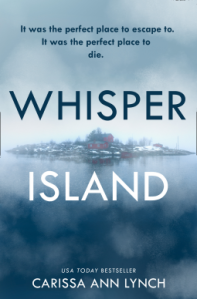
Maddie wants to flee from the ghosts that haunt her life after her parents‘ death. Together with seven others, she takes part in a TV experiment in which they have to stay isolated from the world on an island off the Scottish coast for a year. Equipped with cameras and just the most necessary items, the group has to survive in the unfriendly environment. It does not take too long for them until the first conflicts arise. Who does not contribute enough to the community, who is working harder, how can daytime be used in the most useful way? The issues for quarrelling are manifold and Maddie soon finds herself the main target of the male participants. She has always been an outsider, is she just unable of integrating into or group? She tries hard but with lowering food supplies, tension grows and annoyance ultimately turns into blind rage which sets free basic instincts of survival.
Even though Sarah Goodwin’s thriller “Stranded” follows quite a classic scheme, I was totally gripped by the story and hardly could put down the book. The reader follows the first person narrator Maddie thus sharing not only her insecurities and thoughts but also wondering if you can trust her assessment of the situation and feeling hesitant about the other characters’ behaviour and actions behind Maddie’s back. You know from the prologue that things will turn out nasty and that not everybody will survive, thus tension is set high from the start and does not lower at any point keeping you spellbound.
Even though I personally would never take part in such a challenge, I found the setting enthralling. It is well documented what atrocious surroundings in which a bunch of people are threatened by starvation and lose hope of rescue can make of human beings. They turn into animals, it is just a question of when and degree of how horrible the situation becomes. The author does not wait too long for the first small escalations; the characters are well chosen to quickly provide enough room for conflict.
Despite her isolated and overprotective upbringing, Maddie is fairly well equipped for survival. This she needs to be as all kinds of aggressions are addressed to her by her fellows. Her survival instinct kicks in and she is willing to fight back – not matter what it takes. Yet, the other characters are not drawn one-dimensionally either, especially Zoe shows that at times, you are in conflicting situations where you are forced to take sides even though you do not want to and you have to choose maybe the wrong one just because it is the one with the upper hand.
There is no human abyss left out and thus, you only wait for the next escalation level until you reach the ultimate one. Full of suspense, a thriller which definitely deserves this label.

